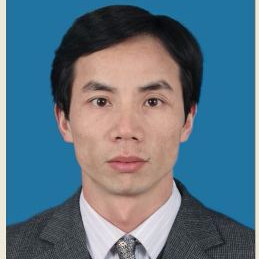Natural Products Discovery and Development: A Themed Issue Dedicated to Professor Leslie Gunatilaka
A special issue of Molecules (ISSN 1420-3049). This special issue belongs to the section "Natural Products Chemistry".
Deadline for manuscript submissions: closed (30 June 2021) | Viewed by 60825
Special Issue Editors
Interests: natural products; isolation and structure elucidation; anticancer; cancer prevention; antibacterial; antifungal; endophytic fungi; marine microorganisms; herbal medicine; small molecules and their biological functions
Special Issues, Collections and Topics in MDPI journals
Interests: bioactive microbial natural products; marine bacteria; marine endophytes; structure elucidation
Special Issues, Collections and Topics in MDPI journals
Special Issue Information
Dear Colleagues,
Molecules is pleased to announce a Special Issue dedicated to Professor A. A. Leslie Gunatilaka of the University of Arizona, United States for his outstanding contributions to the research field of natural products.
Professor Gunatilaka is the Director of the Southwest Center for Natural Products Research and a Professor at the School of Natural Resources & the Environment of the College of Agriculture and Life Sciences at the University of Arizona. He received his B.S. degree from the University of Sri Lanka and Ph.D. degree from the University of London under the supervision of Prof. Derek H.R. Barton, a Nobel Laureate in Chemistry. Prior to joining the University of Arizona in 1997, he served as Professor of Organic Chemistry and chair of the Department of Chemistry at the University of Peradeniya, Sri Lanka. Prof. Gunatilaka has carried out his postdoctoral research at the University of London (with Profs. Derek Barton and Anthony G.M. Barrett), Stanford University (with Prof. Carl Djerassi), and Virginia Polytechnic Institute & State University (with Prof. David G.I. Kingston). Prof. Gunatilaka has a broad range of research interests including biologically active natural products from plants and their associated micro-organisms, anticancer drug discovery, and the medicinal chemistry of natural products, and has pioneered the isolation and characterization of secondary metabolites from rhizospheres and endolichenic fungi. His productive collaborations with national and international researchers in various fields have led to significant findings resulting in over 250 peer-reviewed publications. He has also delivered invited lectures in 17 countries. Prof. Gunatilaka is a fellow of the World Academy of Sciences (TWAS) and has received many honors and awards, including the Sri Lankan Presidential Gold Medal for developing a Center of Excellence in Natural Products Research at the University of Peradeniya and a Leading Edge Award for Innovative Research from the University of Arizona.
This Special Issue welcomes the submission of unpublished manuscripts (original research papers or review articles) on all aspects of natural products and medicinal chemistry research. We plan to receive submissions from 1 July 2020 to 30 June 2021. Manuscripts will be published on an ongoing basis after being processed.
Prof. Shugeng Cao
Prof. Mostafa E. Rateb
Prof. Jianguang Luo
Guest Editors
Manuscript Submission Information
Manuscripts should be submitted online at www.mdpi.com by registering and logging in to this website. Once you are registered, click here to go to the submission form. Manuscripts can be submitted until the deadline. All submissions that pass pre-check are peer-reviewed. Accepted papers will be published continuously in the journal (as soon as accepted) and will be listed together on the special issue website. Research articles, review articles as well as short communications are invited. For planned papers, a title and short abstract (about 100 words) can be sent to the Editorial Office for announcement on this website.
Submitted manuscripts should not have been published previously, nor be under consideration for publication elsewhere (except conference proceedings papers). All manuscripts are thoroughly refereed through a single-blind peer-review process. A guide for authors and other relevant information for submission of manuscripts is available on the Instructions for Authors page. Molecules is an international peer-reviewed open access semimonthly journal published by MDPI.
Please visit the Instructions for Authors page before submitting a manuscript. The Article Processing Charge (APC) for publication in this open access journal is 2700 CHF (Swiss Francs). Submitted papers should be well formatted and use good English. Authors may use MDPI's English editing service prior to publication or during author revisions.
Keywords
- Microbial metabolites
- Plant metabolites
- Herbal medicine
- Biological activity
- Natural product isolation
- Structure elucidation
- Medicinal Chemistry
- Mechanism of action
Benefits of Publishing in a Special Issue
- Ease of navigation: Grouping papers by topic helps scholars navigate broad scope journals more efficiently.
- Greater discoverability: Special Issues support the reach and impact of scientific research. Articles in Special Issues are more discoverable and cited more frequently.
- Expansion of research network: Special Issues facilitate connections among authors, fostering scientific collaborations.
- External promotion: Articles in Special Issues are often promoted through the journal's social media, increasing their visibility.
- e-Book format: Special Issues with more than 10 articles can be published as dedicated e-books, ensuring wide and rapid dissemination.
Further information on MDPI's Special Issue polices can be found here.








